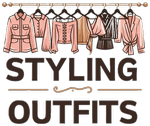Fashion is more than just clothing; it’s a powerful form of self-expression that reflects our personality, mood, and aspirations. In a world where first impressions matter, your fashion style speaks volumes before you even say a word. This comprehensive guide will take you on a journey through the fascinating world of fashion, helping you discover, refine, and celebrate your unique style.
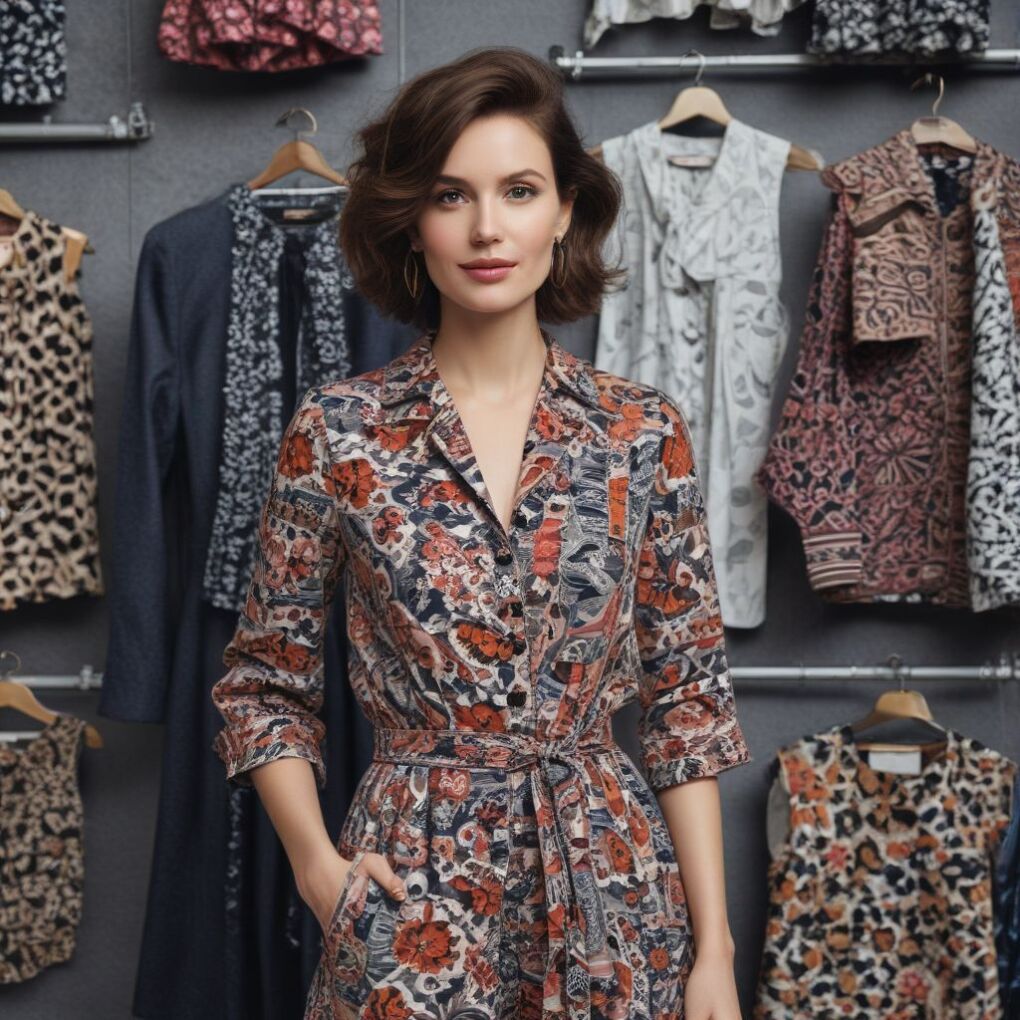
The Foundations of Fashion Style
At its core, fashion style is about making choices that resonate with your inner self. It’s not about blindly following trends but selecting elements that make you feel confident and authentic. As the legendary Coco Chanel once said, “Fashion is not something that exists in dresses only. Fashion is in the sky, in the street, fashion has to do with ideas, the way we live, what is happening.”
Your style is a reflection of your life experiences, cultural background, and personal preferences. It evolves as you grow, adapting to changes in your lifestyle, body, and mindset. The key is to understand this evolution and embrace it, allowing your fashion choices to mirror your journey.
The Building Blocks of Style
- Colour: Different hues evoke different emotions. Find colours that complement your skin tone and resonate with your personality.
- Fit: Well-fitted clothes enhance your body shape, boosting confidence.
- Fabric: From cozy knits to sleek silks, each fabric tells a story. Choose ones that suit your comfort and the occasion.
- Silhouette: A-line, straight, or flared—each shape creates a distinct visual impact.
- Details: Buttons, zippers, embroidery—these small elements make a big statement.
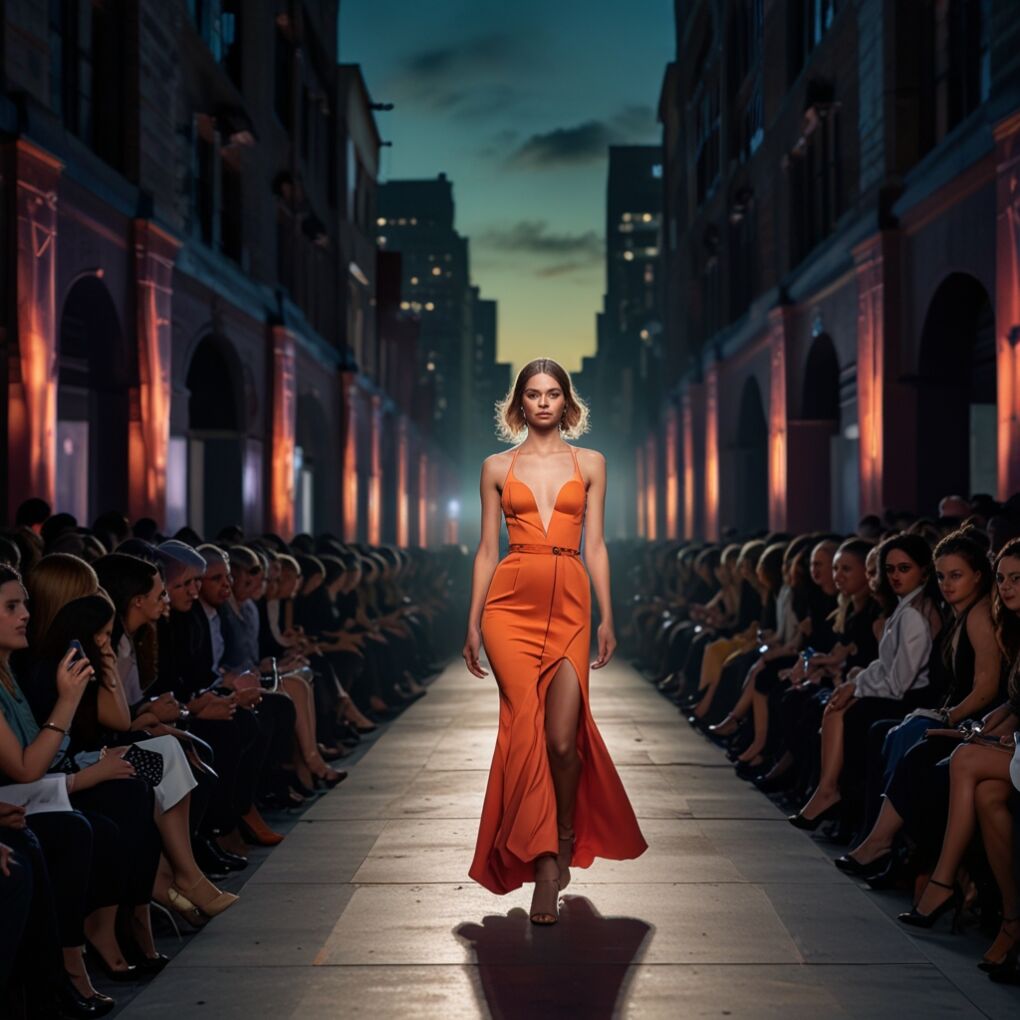
The Language of Patterns
Patterns are a powerful way to express style:
- Stripes: Vertical for elongating, horizontal for width
- Florals: Large for boldness, small for delicacy
- Polka Dots: Playful yet classic
- Animal Prints: A touch of wild, from leopard to zebra
- Paisley: Bohemian elegance
Pro Tip: Mix patterns by varying their scale. Pair a small floral with a large stripe, keeping one color consistent.
Exploring Fashion Style Categories
Fashion offers a wide array of styles, each with its unique aesthetic and philosophy. Here’s a look at some popular categories:
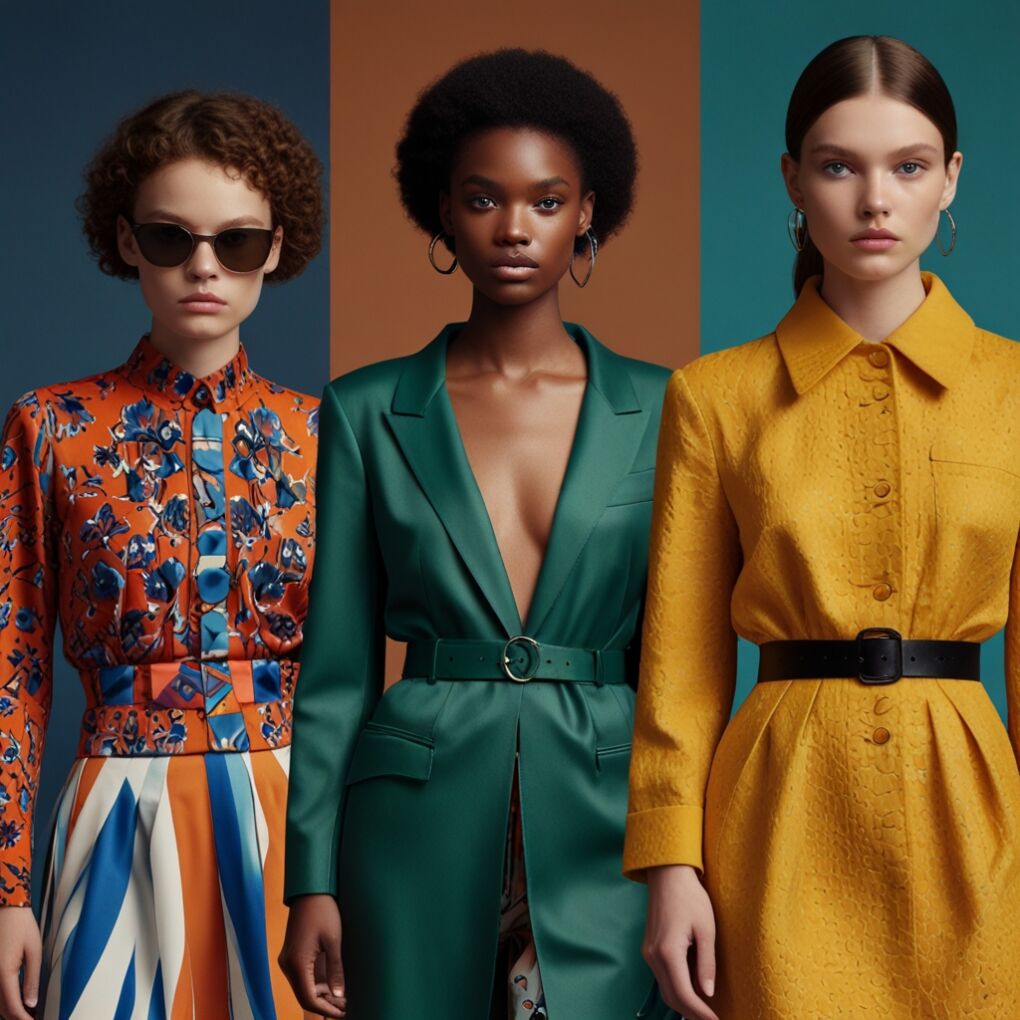
Classic
Timeless elegance is the hallmark of classic style. Think Audrey Hepburn in her little black dress. It’s about investing in high-quality, versatile pieces that stand the test of time. Neutral colours, clean lines, and impeccable tailoring are key.
“Fashions fade, style is eternal.” – Yves Saint Laurent
Commercial Example: The Max Mara Tailored Suit exemplifies classic style with its precise cut, quality wool blend, and timeless design. Features include:
- Single-breasted jacket with peak lapels
- High-waisted, wide-leg trousers
- Available in navy, grey, and black
Bohemian
The free-spirited and romantic, bohemian style embraces natural fabrics, flowing silhouettes, and earthy tones. Artists and nomads, value comfort and individuality and inspire it. Maxi dresses, layered accessories, and vintage finds are staples.
Boho-Chic Fusion
A modern take, boho-chic blends bohemian vibes with polished elements:
- Silk maxi dress paired with a tailored blazer
- Embroidered tunic with slim-fit jeans
- Layered necklaces and a structured handbag
Commercial Example: Free People’s “Feeling Groovy” collection captures bohemian essence:
- Hand-embroidered tunics
- Tiered maxi skirts in batik prints
- Recycled brass jewelry
Minimalist
Less is more in a minimalist fashion. It focuses on simplicity, functionality, and quality. A capsule wardrobe with interchangeable pieces in a neutral palette is typical. Brands like COS and Everlane champion this aesthetic.
Japanese Minimalism
Wabi-sabi, the beauty of imperfection, influences this style:
- Asymmetrical hemlines
- Raw, unfinished edges
- Monochromatic layers
Commercial Example: Eileen Fisher’s Sustainable Collection embodies minimalist values:
- Organic linen shift dress
- Recycled cashmere sweater
- GOTS-certified cotton pants
- Each piece is designed for longevity and recyclability
Streetwear
Born from skate and hip-hop culture, streetwear is all about attitude. It combines comfort with bold statements—think oversized hoodies, graphic tees, and limited-edition sneakers. Supreme and Off-White are iconic in this space.
High Fashion Meets Street
Luxury brands are embracing streetwear:
- Gucci’s collaboration with graffiti artist GucciGhost
- Louis Vuitton x Supreme partnership
- Balenciaga’s platform Crocs
Commercial Example: Nike’s Jordan Brand releases epitomize streetwear’s collector culture:
- Air Jordan 1 Retro High OG “Lost and Found”
- Limited quantities, unique backstory
- Resale value often exceeds 300% of retail
Preppy
Originating from Ivy League campuses, the preppy style exudes a polished, academic vibe. It features classic American sportswear: polo shirts, blazers, chinos, and loafers. Ralph Lauren is synonymous with this look.
Modern Prep Evolution
Today’s preppy style incorporates diverse influences:
- Gingham shirts with leather skirts
- Cricket sweaters over slip dresses
- Penny loafers with distressed jeans
Commercial Example: Rowing Blazers brings irony to prep:
- Rugby shirts in bold colour blocks
- Tweed blazers with punk patches
- Collaborations with historically preppy brands like Sperry
| Style Category | Key Elements | Celebrity Icon | Must-Have Item | Modern Twist |
|---|---|---|---|---|
| Classic | Neutral colors, tailoring | Audrey Hepburn | Little black dress | Sustainable materials |
| Bohemian | Natural fabrics, layers | Sienna Miller | Maxi dress | Boho-chic fusion |
| Minimalist | Simple lines, neutrals | Gwyneth Paltrow | White shirt | Japanese wabi-sabi |
| Streetwear | Bold graphics, sneakers | Rihanna | Limited-edition kicks | High fashion collabs |
| Preppy | Collegiate pieces | Olivia Palermo | Navy blazer | Ironic, diverse mix |
Finding Your Personal Style
Discovering your unique style is an exciting journey of self-exploration. Here are steps to guide you:
- Analyze Your Lifestyle: Are you a busy professional, a creative freelancer, or a stay-at-home parent? Your daily activities shape your wardrobe needs.
- Identify Style Icons: Who do you admire for their fashion sense? It could be a celebrity, a historical figure, or someone in your life.
- Create a Mood Board: Use Pinterest or a physical board to collect images that appeal to you. Look for common themes.
- Experiment: Don’t be afraid to try different styles. What looks good in theory might not feel right in practice.
- Assess Your Body Shape: Understanding your proportions helps you choose flattering cuts.
- Mind Your Budget: Great style doesn’t require a fortune. Mix high-end pieces with affordable finds.
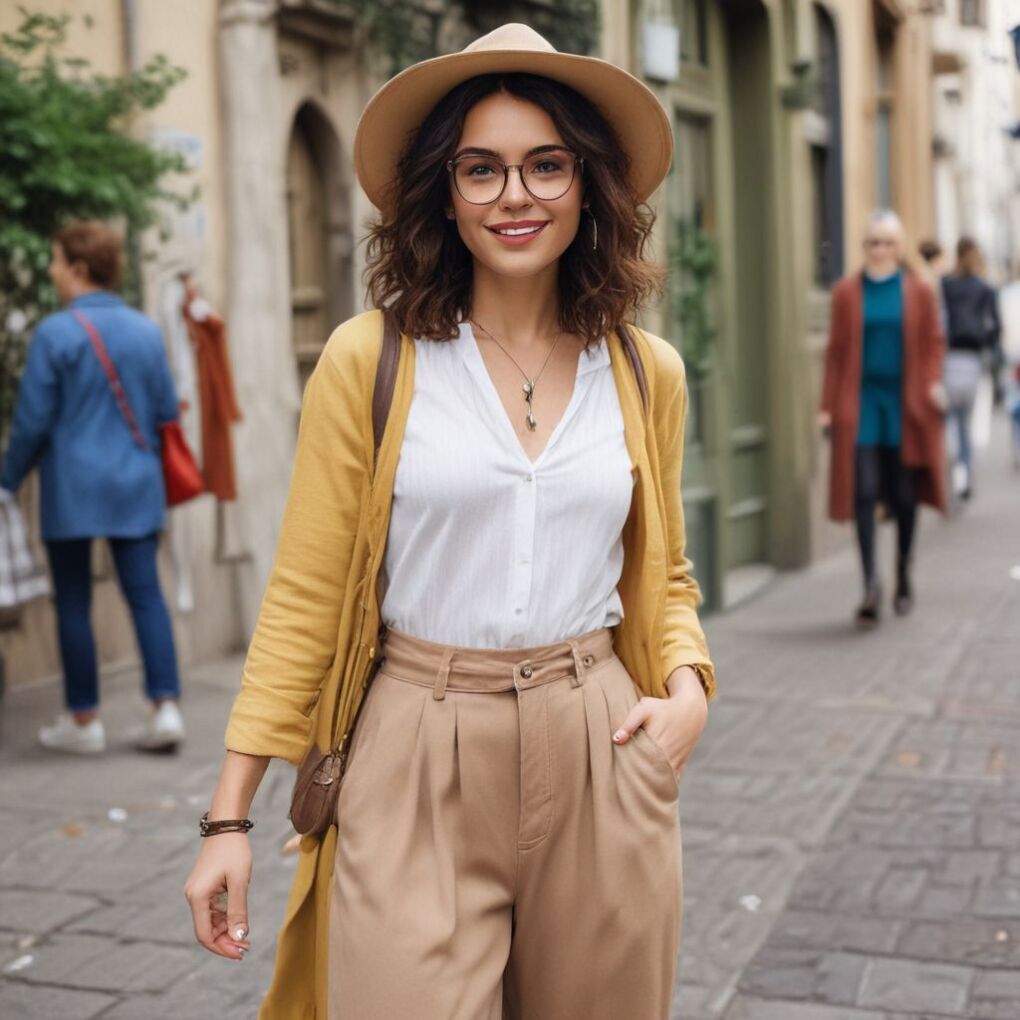
Style Quiz Tools
Online quizzes can offer insights:
- Goop’s “What’s Your Style Archetype?” (bohemian, classic, chic, etc.)
- Stitch Fix’s style quiz, which also considers fit preferences
- 16Personalities’ fashion-adapted Myers-Briggs test
Pro Tip: Follow stylists on Instagram like @lucystylesyou or @allyreed_ for daily outfit ideas tailored to different personalities.
“To be yourself in a world that is constantly trying to make you something else is the greatest accomplishment.” – Ralph Waldo Emerson
The Impact of Culture and Subcultures on Fashion
Fashion is a powerful communicator of cultural identity. Around the globe, traditional garments like the Indian sari, Japanese kimono, or Scottish kilt reflect rich heritages. In the modern context, subcultures significantly influence fashion:
- Punk (1970s): Ripped jeans, leather jackets, and safety pins as a rebellion against mainstream society.
- Hip-Hop (1980s): Baggy clothes, gold chains, and branded sportswear reflecting urban experiences.
- Grunge (1990s): Flannel shirts, ripped jeans, and Doc Martens echoing Seattle’s music scene.
- K-Pop (the 2010s): Bold colours, innovative designs, and gender-fluid styles inspired by Korean pop culture.
Cultural Fusion in Fashion
Global exchange enriches style:
- Guo Pei’s East-meets-West couture (Chinese heritage with Parisian techniques)
- Dries Van Noten’s use of Indian embroideries
- Thebe Magugu’s modern take on African motifs
Commercial Example: Lemlem, founded by model Liya Kebede, showcases Ethiopian craftsmanship:
- Hand-woven cotton dresses
- Empowers traditional weavers
- Blends African aesthetics with contemporary silhouettes
Sustainability: The Future of Fashion Style
In an era of climate change, sustainable fashion is not just a trend but a necessity. Consumers are increasingly aware of the industry’s environmental impact, from water pollution to textile waste. As a result, many are aligning their style choices with their values.
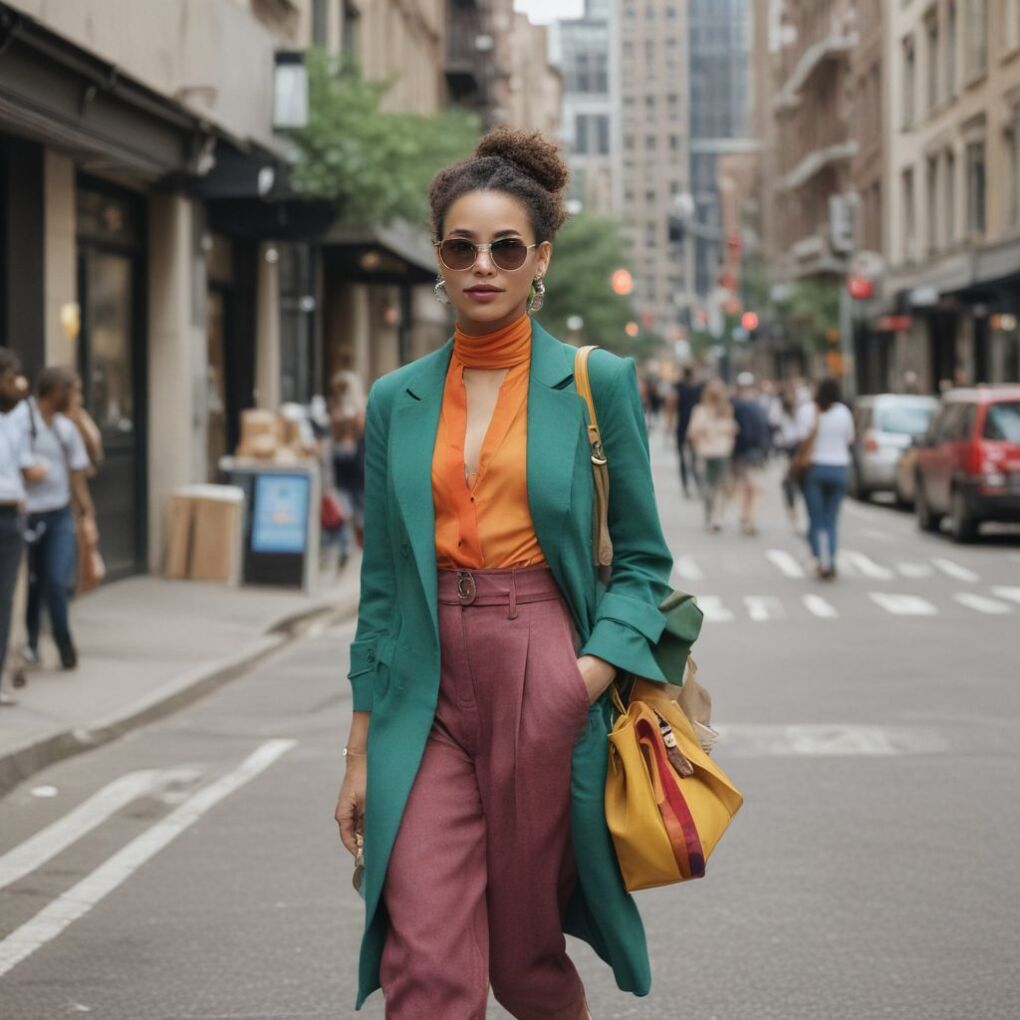
Key Aspects of Sustainable Fashion:
- Ethical Production: Fair wages and safe working conditions for garment workers.
- Eco-Friendly Materials: Organic cotton, recycled polyester, and innovative fabrics like Piñatex (made from pineapple leaves).
- Circular Economy: Designing for longevity, repairability, and recyclability.
- Secondhand Shopping: Embracing vintage and thrift finds to reduce demand for new production.
Innovative Eco-Materials
- Mylo™: Leather-like material from mushroom roots (Used by Stella McCartney)
- Econyl®: Nylon made from fishing nets (Used by Prada’s Re-Nylon line)
- Orange Fiber: Derived from citrus waste (Collaborated with Salvatore Ferragamo)
Pro Tip: Use Good On You app to check brand sustainability ratings.
Brands leading the way include Patagonia, known for its environmental activism, and Reformation, which combines sustainability with trendy designs. Additionally, platforms like ThredUp and The RealReal are making secondhand shopping more accessible.
“Buy less, choose well.” – Vivienne Westwood
Commercial Example: Allbirds shoes redefine eco-fashion:
- Merino wool and eucalyptus tree fibre uppers
- SweetFoam™ soles from sugarcane
- Carbon-negative production
The Psychology Behind Fashion Choices
What we wear profoundly affects our mental state, a concept known as “enclosed cognition.” Research shows that clothing can influence our confidence, attentiveness, and even negotiation skills.
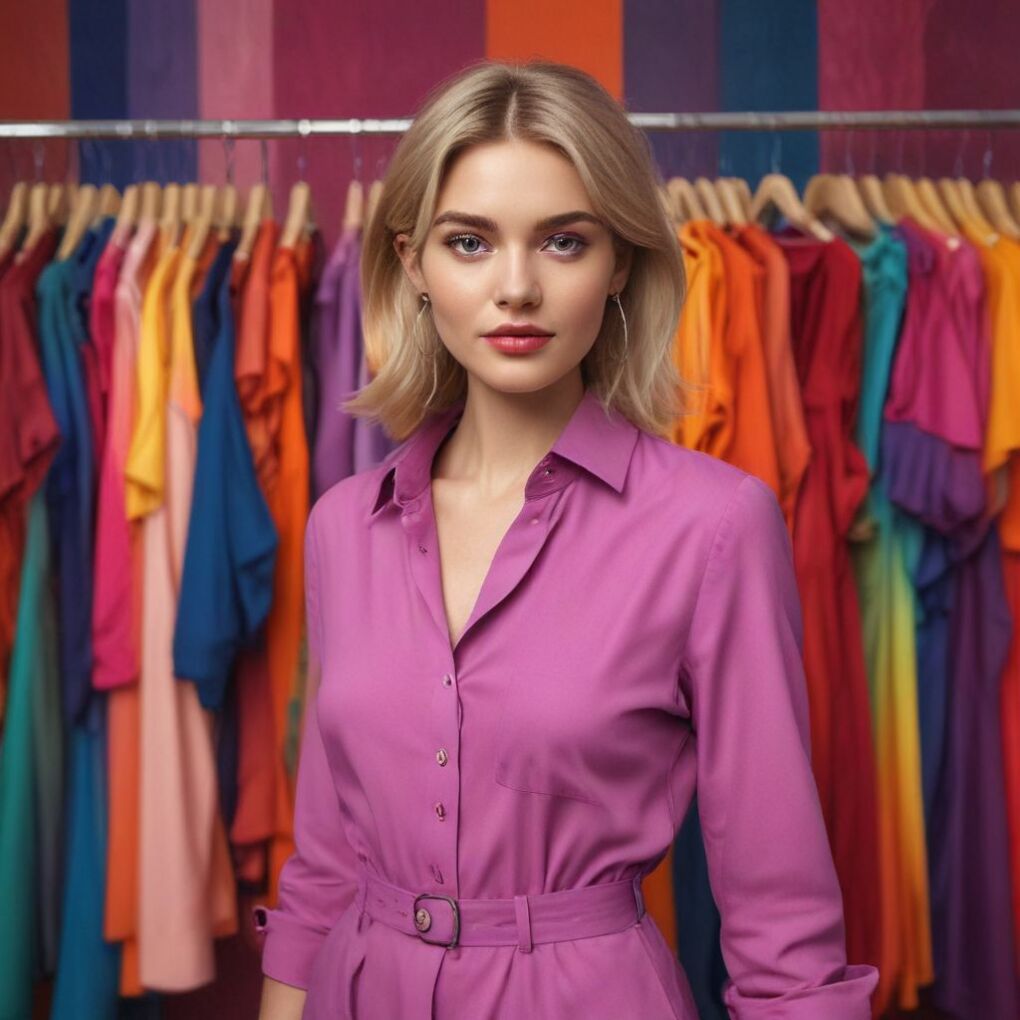
- Power Dressing: Wearing a suit can enhance abstract thinking and feelings of power.
- Colour Impact: Red often signifies confidence and attraction, while blue conveys trust.
- Comfort vs. Style: Finding the right balance improves both physical ease and psychological comfort.
Fashion and Mood Management
- Dopamine Dressing: Wearing bright colours to boost happiness
- Weighted Clothing: Deep pressure therapy from weighted vests
- Texture Therapy: Soft knits or smooth silks for anxiety relief
Pro Tip: Create a “power outfit” for big days—something that makes you feel invincible.
In challenging times, fashion can also be a form of self-care. The lockdowns during the COVID-19 pandemic saw a rise in loungewear as people sought comfort. Conversely, some embraced bright colours and bold patterns as a mood booster.
Commercial Example: Pangaia’s sustainable loungewear doubles as mood-lifters:
- PPRMINT™ technology in hoodies for antibacterial freshness
- Bright, naturally dyed colours (sakura pink, orchid purple)
- Made with recycled cotton and environmentally friendly dyes
Adapting Style to Different Life Stages
Your fashion style should evolve with you, adapting to changing roles and phases:
College Years
- Goal: Express individuality while on a budget
- Tips: Shop secondhand, participate in clothing swaps, DIY customization
- Example: Depop app for peer-to-peer vintage shopping
Early Career
- Goal: Build a professional wardrobe
- Tips: Invest in quality basics, choose versatile pieces, watch for sales
- Example: Ministry of Supply’s high-tech, wrinkle-free blazers
Parenthood
- Goal: Balance style with practicality
- Tips: Easy-care fabrics, stylish flats, accessible closures for nursing
- Example: Seraphine’s chic maternity line, worn by Kate Middleton
Retirement
- Goal: Comfort without sacrificing elegance
- Tips: Focus on fit, experiment with new styles, indulge in quality pieces
- Example: Lands’ End’s adaptive clothing with easy-grip zippers
Breaking Fashion Rules: The New Style Paradigm
Traditional fashion dictates like “don’t mix patterns” or “dress for your age” are becoming obsolete. Today’s style celebrates individuality and challenges norms:
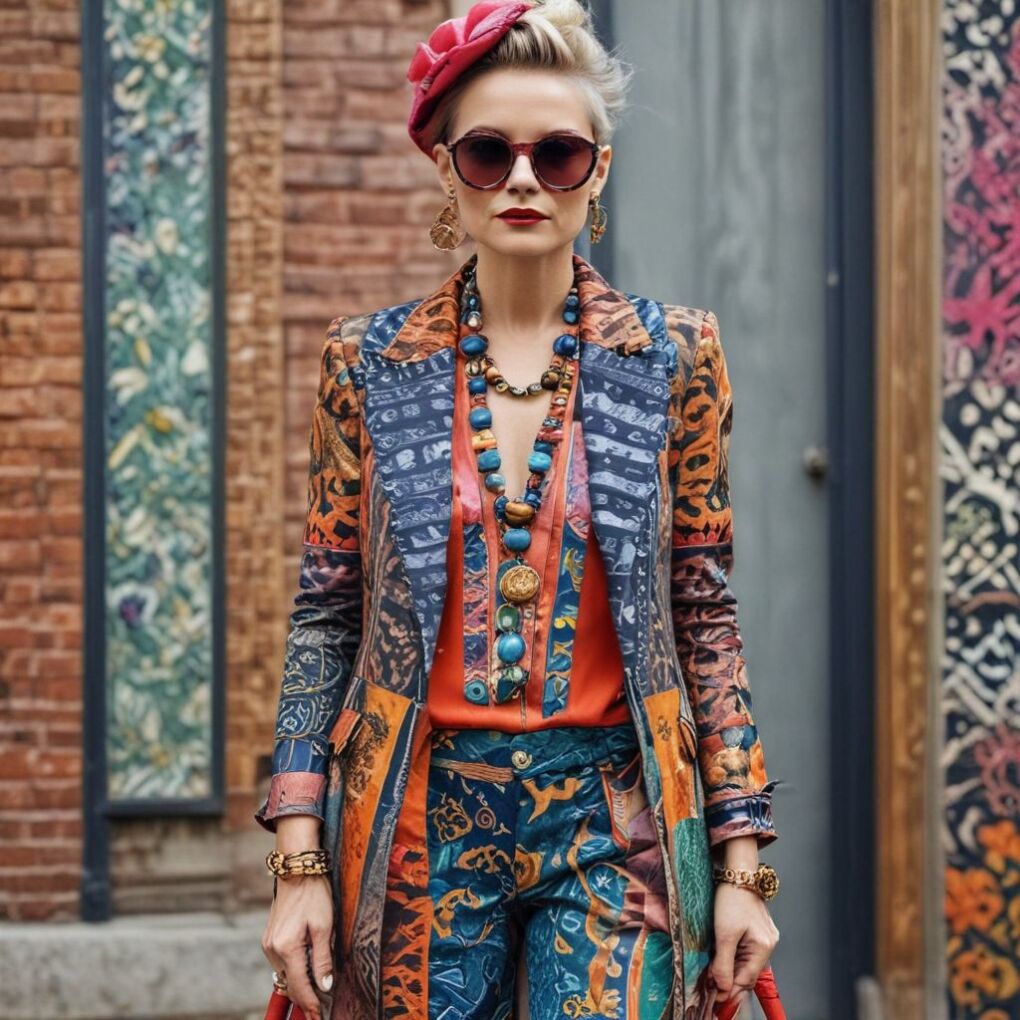
- Age Is Just a Number: Helen Mirren and Iris Apfel prove that style has no age limit.
- Gender-Fluid Fashion: Brands like Telfar and One DNA offer unisex collections.
- Body Positivity: Labels like Universal Standard provide chic options in a wide size range.
- High-Low Mix: Pair a thrift store find with a designer bag—it’s all about personal flair.
Fashion as a Political Statement
Clothes can advocate for change:
- Slogan tees supporting causes
- Pussy hats in women’s marches
- Rewearing outfits to promote sustainability (like Jane Fonda)
Pro Tip: Support brands that align with your values, making every purchase a vote.
Commercial Example: Lingua Franca’s embroidered sweaters:
- Hand-stitched activist phrases (“Nevertheless, she persisted”)
- Fair-trade production
- A portion of sales donated to nonprofits
Tech Meets Fashion: The Style Revolution
Technology is reshaping fashion in exciting ways:
- AR Try-Ons: Apps like Warby Parker’s let you virtually try on glasses.
- AI Stylists: Stitch Fix uses algorithms to personalize outfit recommendations.
- 3D Printing: Designers like Iris van Herpen create intricate, futuristic pieces.
- Smart Fabrics: Levi’s Jacquard by Google jacket allows gesture controls.
Emerging FashionTech
- Digital-Only Clothing: The Fabricant sells virtual garments for social media
- Kinetic Garments: Becca McCharen-Tran’s pieces react to body heat
- Emotional Lighting: Cute Circuit’s skirts reflect your mood
Pro Tip: Follow FashionTech blogs like ElektroCouture for cutting-edge wearables.
E-commerce has also democratized access to global styles. You can buy artisanal crafts from Peru or avant-garde designs from Tokyo with a few clicks.
Commercial Example: Ministry of Supply’s Mercury Intelligent Heated Jacket:
- Built-in heating coils
- Auto-adjusts to body temperature
- Machine washable, battery-powered
Fashion Style in Professional Settings
In the workplace, your style can be a strategic tool. It should align with your industry’s culture while reflecting your personal brand.
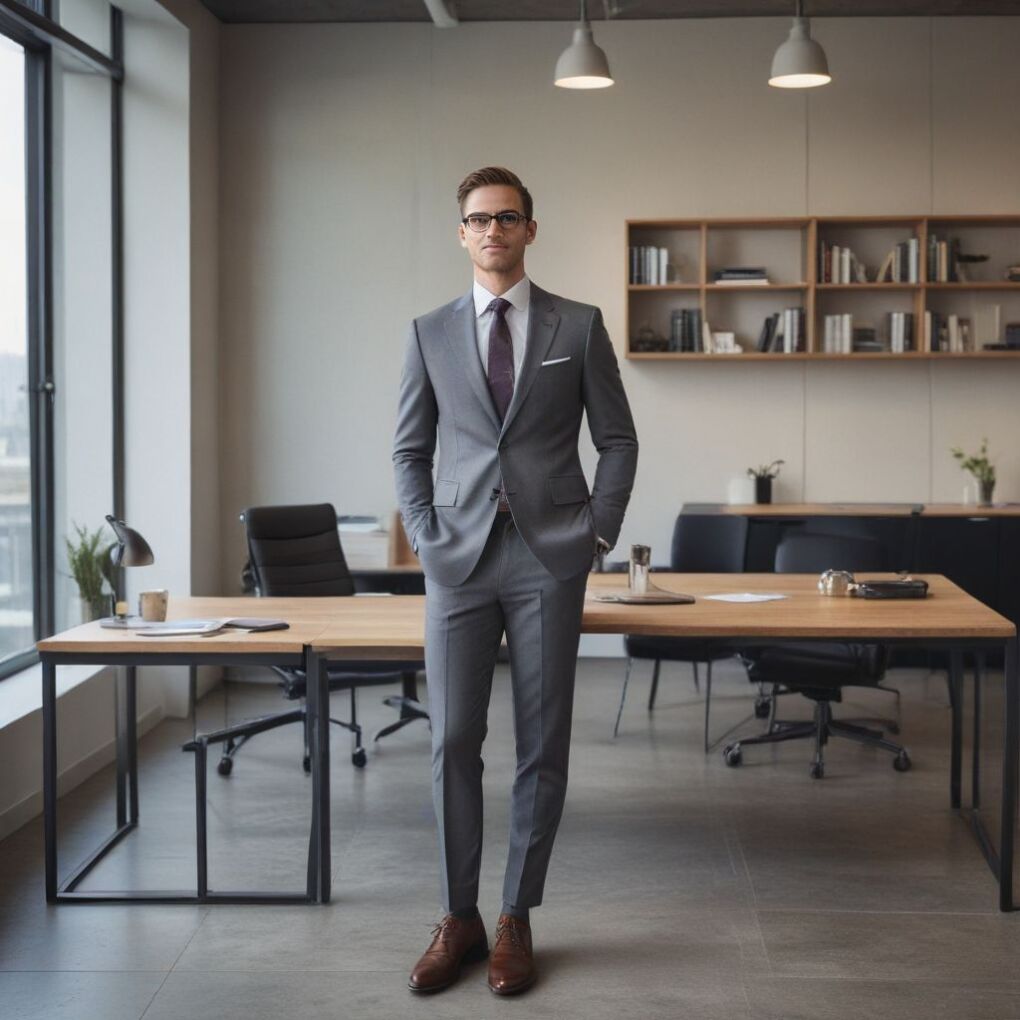
Industry-Specific Style:
- Finance: Conservative suits in navy or grey, subtle patterns
- Creative Fields: More leeway for colour, unique accessories
- Tech: Casual but polished—think quality jeans and smart layers
- Healthcare: Prioritize comfort and cleanliness; brighten scrubs with colourful sneakers
Personal Brand Through Fashion
- Colour Signature: Always wear a pop of yellow
- Statement Piece: Known for bold eyewear or unique brooches
- Cultural Pride: Incorporating traditional elements
Pro Tip: Build a “work uniform” to streamline decisions and strengthen your image.
“I don’t design clothes. I design dreams.” – Ralph Lauren
Commercial Example: Mercer’s workwear solves common issues:
- Breathable, anti-sweat blazers
- Machine-washable silk blouses
- Dresses with built-in shapewear
Conclusion: Embracing Your Fashion Journey
Fashion style is a deeply personal yet universally relatable aspect of the human experience. It’s a language that transcends words, communicating our identities, aspirations, and connections to the world. As we navigate trends, cultural shifts, and technological advances, the core of style remains unchanged—it’s about authenticity.
Your fashion choices are a canvas for self-expression, a source of empowerment, and a reflection of your evolving story. There’s no “right” way to dress, only what feels genuinely you. So, experiment boldly, respect traditions thoughtfully, and adapt styles creatively. In doing so,
